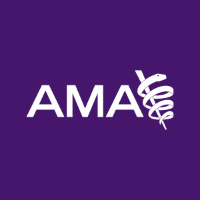 With many communities across the country in need of additional frontline health care workers to respond to the COVID-19 pandemic, the AMA (@AmerMedicalAssn) is announcing guidance to help medical schools and health systems make responsible decisions about how to safely incorporate medical students. Specifically, the new guidance aims to ensure medical schools and health systems are taking proper precautions when engaging medical students in direct patient care and offer best practices to institutions that are considering implementing early graduation to allow students to join the workforce during the pandemic.
With many communities across the country in need of additional frontline health care workers to respond to the COVID-19 pandemic, the AMA (@AmerMedicalAssn) is announcing guidance to help medical schools and health systems make responsible decisions about how to safely incorporate medical students. Specifically, the new guidance aims to ensure medical schools and health systems are taking proper precautions when engaging medical students in direct patient care and offer best practices to institutions that are considering implementing early graduation to allow students to join the workforce during the pandemic.
“Our medical students and residents are important members of the health care workforce in fighting the COVID-19 pandemic. As many physicians-in-training will be enlisted to provide direct patient care during this time, it is our responsibility to ensure that they are being protected and have the support they need to safely navigate the pandemic,” said AMA President Patrice A. Harris, M.D. “This guidance is intended to keep medical students healthy and safe as some health systems may rely on them to care for patients on the front lines of the pandemic.”
While there are many opportunities for physicians-in-training to care for patients without making direct physical contact, some hospitals and health systems may have workforce needs great enough to consider including medical students in direct patient care during the pandemic. Additionally, some medical students are being permitted to graduate early and may begin providing direct patient care during the pandemic as part of a medical staff prior to beginning their residency training. The AMA’s guiding principles to help protect medical students during COVID-19 can be found here, as part of the AMA Medical Education COVID-19 Resource Guide. The AMA also recently hosted a webinar about deploying medical students in alternative roles to help implement this guidance.
The AMA is identifying examples of how medical students are contributing to the nation’s health care workforce during the pandemic through non-direct patient care and sharing those examples with medical schools and health systems across the country. The AMA will continue to provide resources to physicians and physicians-in-training to help prepare them to care for patients as the pandemic evolves and protect themselves and their patients from illness. These resources are available on the AMA COVID-19 Resource Center.
About the American Medical Association
The American Medical Association is the physicians’ powerful ally in patient care. As the only medical association that convenes 190+ state and specialty medical societies and other critical stakeholders, the AMA represents physicians with a unified voice to all key players in health care. The AMA leverages its strength by removing the obstacles that interfere with patient care, leading the charge to prevent chronic disease and confront public health crises and, driving the future of medicine to tackle the biggest challenges in health care.
